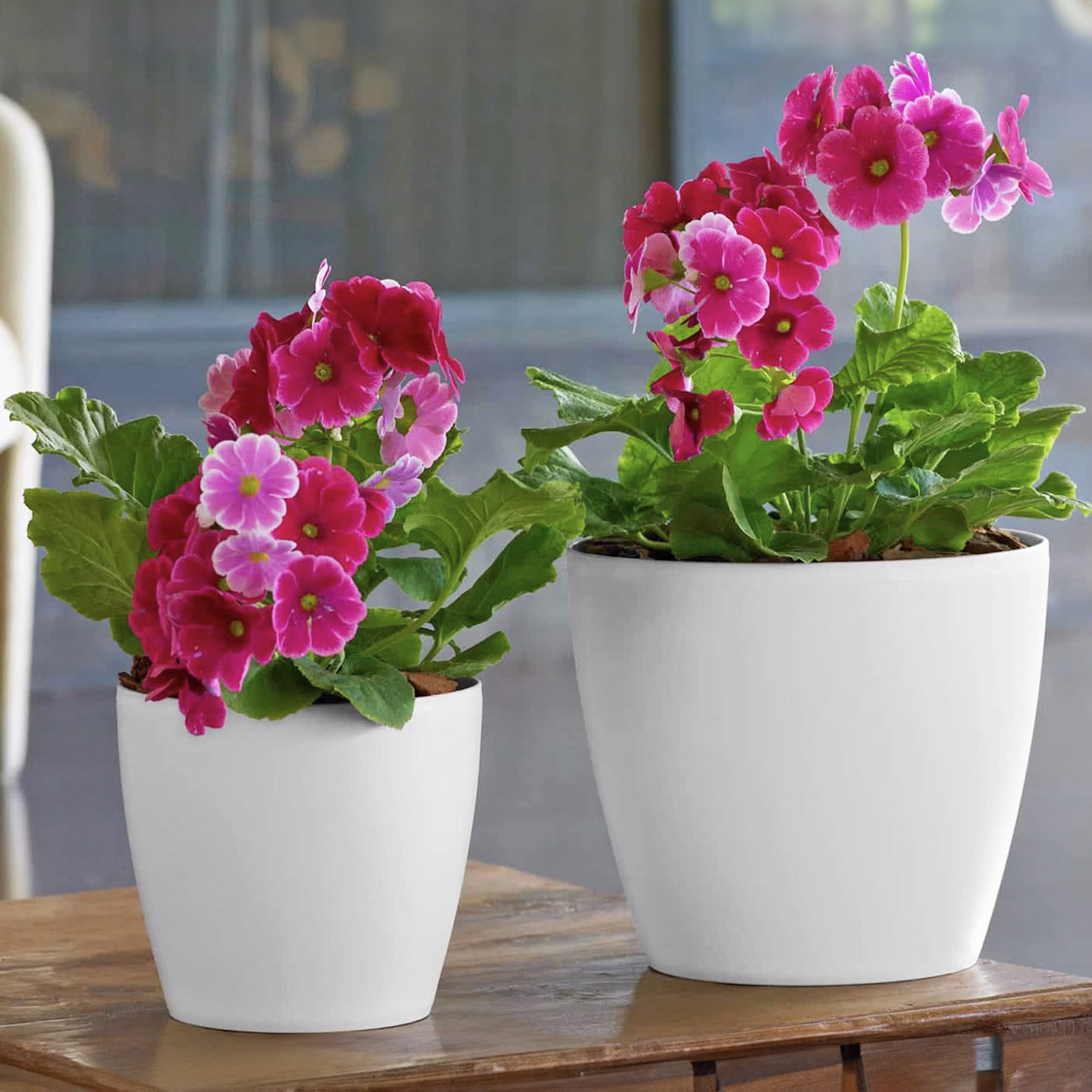How To Get An Easter Cactus To Bloom Every Year: Expert Tips For Stunning Spring Flowers
Discover the secrets to vibrant Easter cactus flowers and follow these key steps to ensure spectacular blooms just in time for spring.

Amy Draiss
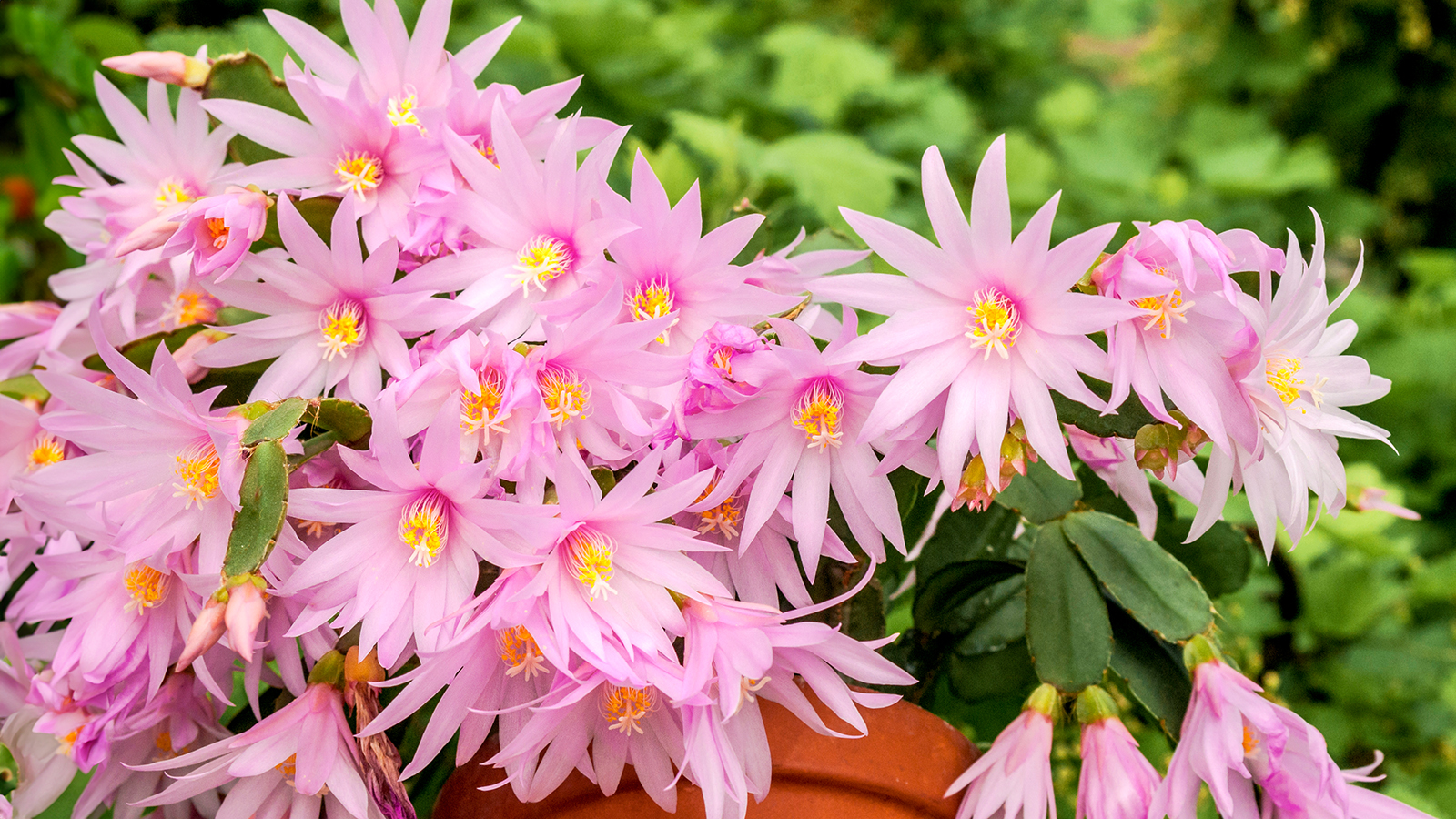
Easter cacti (Rhipsalidopsis gaertneri) are prized houseplants that bloom with spectacular star-shaped flowers in the spring. They can put on a show lasting several weeks between March and May – and with a little effort can bloom for a second time a few months later. However, flowers aren't guaranteed, and learning how to get an Easter cactus to bloom year after year is a skill owners must master.
Encouraging flowers is one of the most misunderstood aspects of Easter cactus care. To set bud, the plants must experience a period of dormancy in the weeks building up to spring. While this occurs naturally in the plant's natural habitat, the optimum conditions need to be artificially created indoors. Luckily this is not too difficult.
Easter cacti possess the most beautiful flowers of the different types of holiday cactus. Their care requirements are similar to the Thanksgiving cactus and Christmas cactus, which bloom during fall and winter. However, the Easter cactus is more particular about its growing conditions than its cousins. If you fail to understand the plant's unique requirements, then not only will it not flower, but it could lead to more serious Easter cactus problems that will eventually result in its demise.
Here's everything you need to know to get your Easter cactus to bloom.
Understanding the Easter Cactus
Despite its name, Easter cactus is not like desert cacti that thrive in dry heat. It is a tropical plant native to coastal mountainous rainforests in Brazil. It's also an epiphyte plant, meaning it grows on trees, absorbing moisture and nutrients from the surrounding environment and debris.
In the home environment, this translates to requiring warmth, humidity, indirect light, and a well-draining potting mix.
As Easter cactus is native to the Southern Hemisphere, it experiences winter during our summertime and blooms at a different time of year than houseplants grown in the Northern Hemisphere. While in the winter Brazillian rainforests do not get particularly cold, up in the mountains temperatures do become cooler and days grow shorter. At this time of year, the plant enters dormancy, resetting its biological clock and allowing it to push out new buds once warmer, brighter days arrive.
Sign up for the Gardening Know How newsletter today and receive a free copy of our e-book "How to Grow Delicious Tomatoes".
To make an Easter cactus flower, you need to recreate these conditions as closely as possible to force the plant to enter dormancy. Follow these steps to trigger flowering:
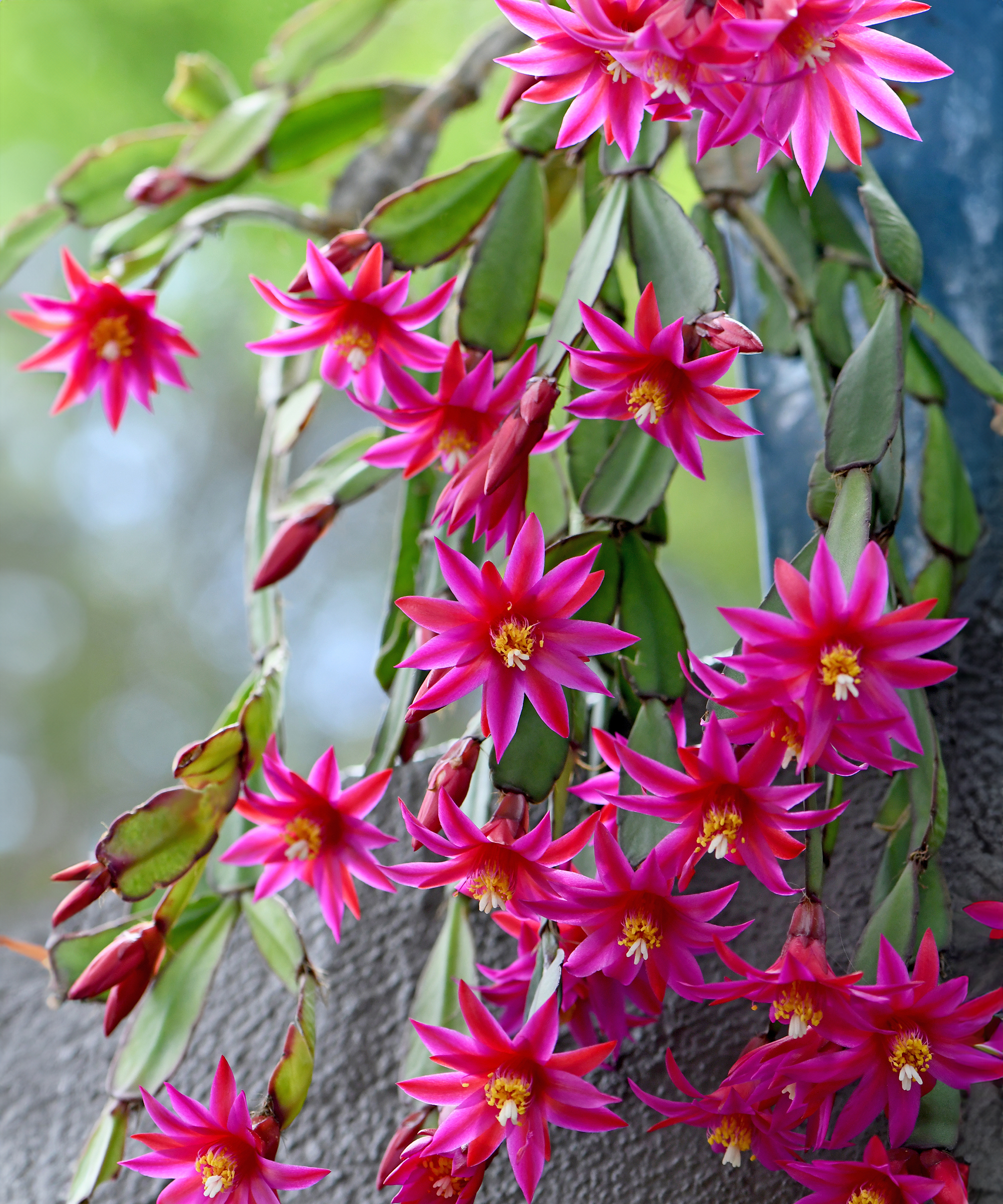
1. Reduce Light Hours
During winter, you need to help your Easter cactus hibernate by shortening the number of daylight hours each day. This means providing around 12 to 16 hours each night of total darkness. The plants require these short days for a period of around 8-12 weeks prior to flowering.
If your Easter cactus lives in a room that is artificially lit during the evening or early morning, then place it in a cupboard overnight or even cover it with a box or breathable bag.
During the day, the plant should receive bright, indirect light.

2. Cool it Down
When an Easter cactus is actively growing, it thrives in temperatures of around 60 to 75°F (16 to 24°C), but to encourage flowering, the plant requires a cool period during dormancy.
At the same time as reducing light hours, move the plant to a cool room where it will receive daytime temperatures between 60 to 65°F (16 to 18°C) and nighttime temperatures of 50 to 60°F (10 to 15°C).
Once buds begin to form, gradually increase temperature and daylight hours. Sudden temperature changes and drafts can cause bud drop.
3. Reduce Watering
When an Easter cactus enters dormancy it will take up less water from the soil, so it's important to cut back on watering during this time. Overwatering an Easter cactus can quickly lead to root rot.
While you shouldn't let the soil to become bone dry, it should be allowed to dry out slightly between waterings. Rather than water on schedule, the best thing to do is to use the finger test. Every couple of days, push your index finger into the soil down to the second knuckle; only water if the soil feels dry below the top inch of soil.
Watering requirements will increase when the plant comes out of dormancy, but this is a good rule to follow at any time of year.
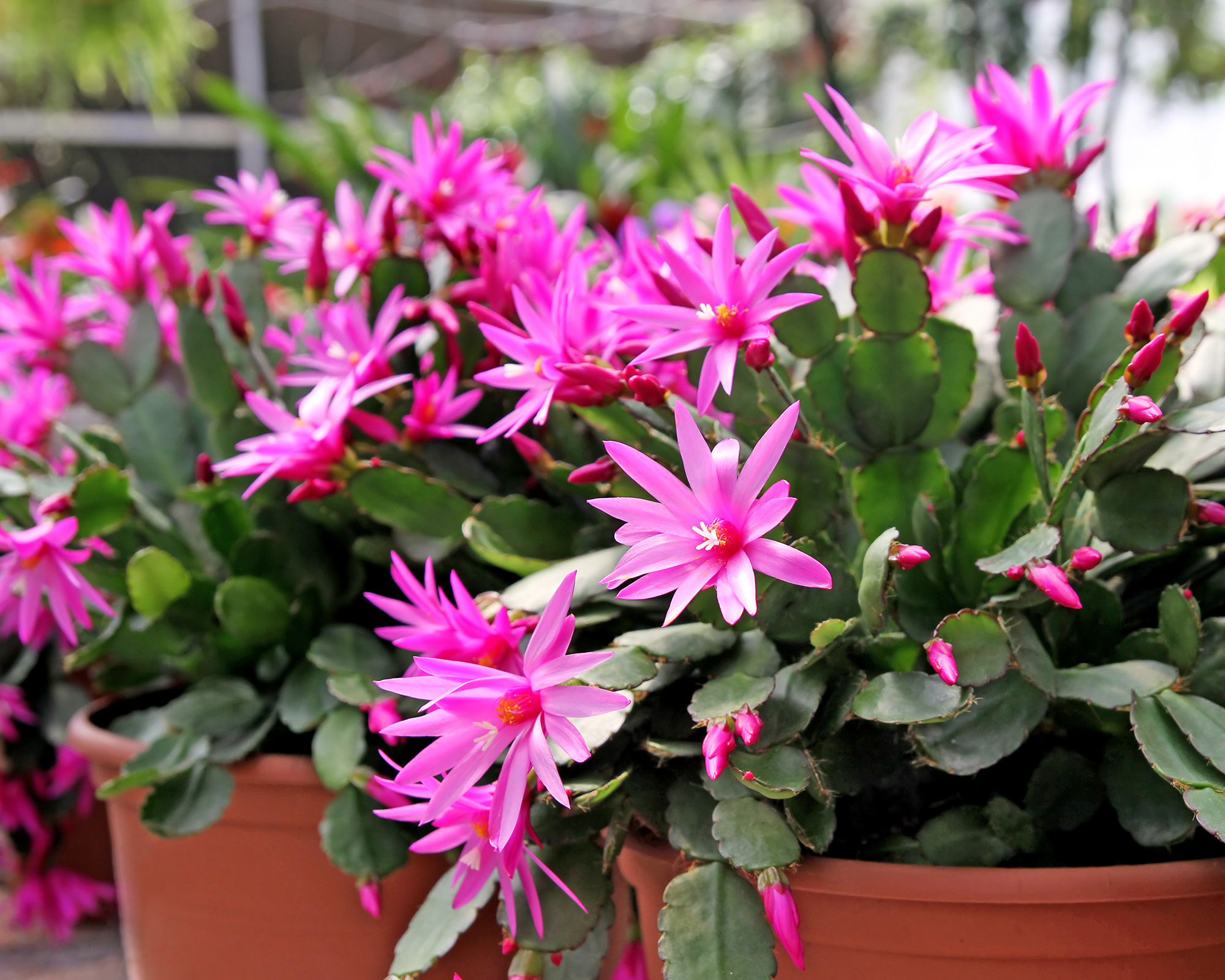
4. Provide Humidity
Easter cacti thrive with relative humidity of 40 to 60%, even during the dormant months. Home heating systems can dry out the air, so raise humidity for houseplants by placing the pot on a pebble-filled tray with a little water or using a small houseplant humidifier.
If using the tray method, do not allow the roots of Easter cactus plants to sit in water – there must be some separation between the water in the tray and the base of the pot, provided by the pebbles.
5. Stop Fertilizing
During the growing season, fertilizing Easter cactus plants is a key part of their care. Once a month, apply a balanced houseplant fertilizer while watering.
In winter, stop fertilizing so the plant can rest and not be encouraged to put on new growth. Do not start feeding again until the plant has finished flowering.
If you really want to keep feeding your Easter cactus then switch to a flower-boosting formula that's low in nitrogen with a high phosphorus content.
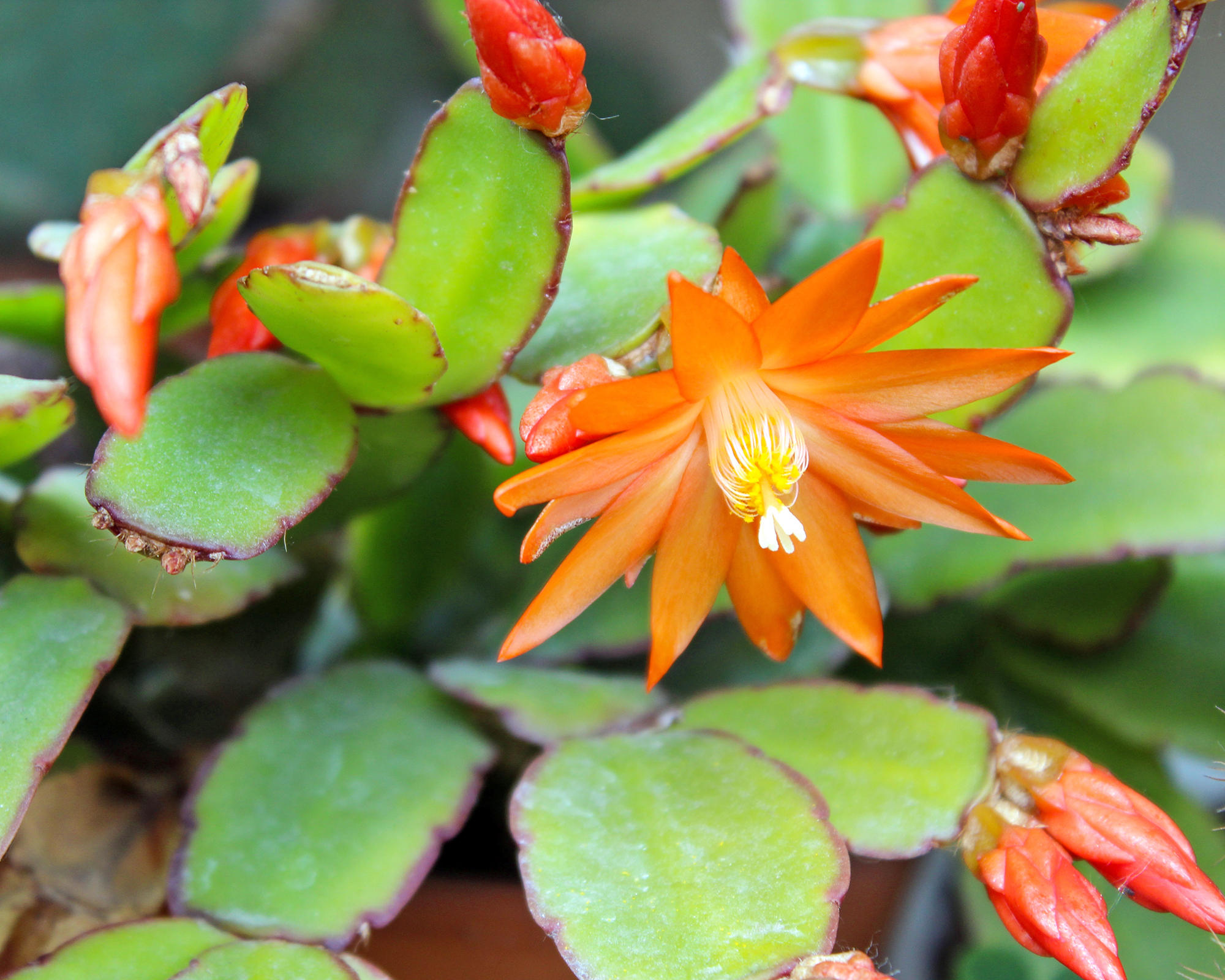
6. Avoid Repotting
Unless your Easter cactus looks in poor health, do not even consider repotting it in the build-up to flowering. This could completely disrupt the bloom cycle and stop the formation of buds.
Repotting an Easter cactus is only necessary every two or three years, but eventually, the potting mix will break down and the plant will outgrow its pot. The roots prefer to be somewhat restricted, so only go up one pot size and use a free-draining potting mix that contains perlite or vermiculite.
This is also a good time to prune your plant, using the same procedure as for pruning a Christmas cactus.
Why is My Easter Cactus Not Blooming?
As long as it is enabled to enter a dormant state over winter, a healthy Easter cactus will begin to set buds in late winter or early spring. If this is not happening, check for the following issues:
- Too Much or Too Little Light
To encourage flowering, an Easter cactus needs a short-day period of 8-12 weeks, with an overnight dark period of at least 12 hours. In general, does the Easter cactus have firm, green, and slightly glossy leaves? If they are reddish or dry they may be receiving too much sun; if they are weak they may not be receiving enough light. - Overwatering or Underwatering
Check for signs of root rot, such as yellowing foliage, wet soil, and a bad smell. This serious disease is caused by overwatering and must be tackled immediately. At the opposite end of the scale, dehydrated leaves will appear shriveled. - Incorrect Temperature
Easter cactus needs a period of 8-12 weeks where it experiences cool overnight temperatures of 50 to 60°F (10 to 15°C). Use a thermometer to keep track of temperature. - Disease and Pests
While Easter cacti are not overly prone to diseases and pests, they can occur and prevent flowering. Examine the plant carefully and follow the same protocol as when dealing with Christmas cactus diseases and pests.
More Houseplant Inspiration
- Want maximum flowers? Add one of these longest-flowering houseplants to your collection for spectacular blooms all year.
- Discover the 5 winter houseplant care mistakes you’re probably making, according to a horticulturist.
- Should you fertilize houseplants in winter? Our expert says to check the light levels before reaching for the feed.
- Browse indoor gardening essentials in the Gardening Know How Shop – from rare and unusual houseplants to growing kits and planters.

Melanie is an experienced gardener and has worked in homes and gardens media for over 20 years. She previously served as Editor on Period Living magazine, and worked for Homes & Gardens, Gardening Etc, Real Homes, and Homebuilding & Renovating. Melanie has spent the last few years transforming her own garden, which is constantly evolving as a work in progress. She is also a passionate organic home grower, having experimented with almost every type of vegetable at some point. In her home, Melanie tends to an extensive houseplant collection and is particularly fond of orchids.
- Amy DraissDigital Community Manager
